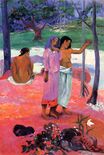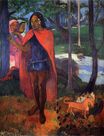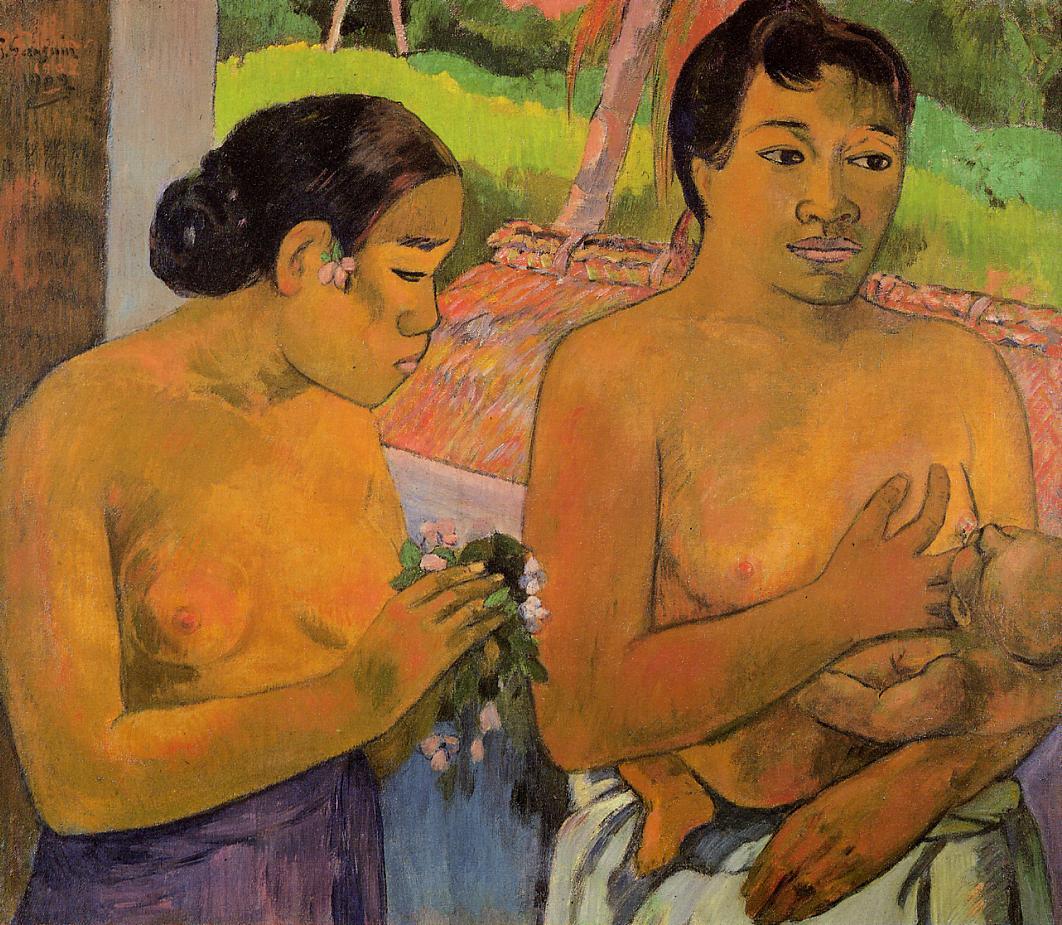Paul Gauguin - The Offering 1902
 |
 |
 |
 |
 |
 |
 |

The Offering 1902
68xx78cm oil/canvas
Bührle Foundation, Zürich, Switzerland
The image is only being used for informational and educational purposes
<< Previous G a l l e r y Next >>
From Bührle Foundation, Zürich:
Paul Gauguin has entered the annals of art history as the third great post-Impressionist, alongside Paul Cézanne and Vincent van Gogh. His work, too, has an important place in the Bührle Collection. Gauguin's life combined the status of an artistic pioneer with that of a social outsider to an extraordinary degree. Bit by bit, the wealthy Paris banker degenerated into a sick man with barely the means to subsist. Equally gradual was Gauguin's geographical quest, ever further from the centre of his previous life, until he settled finally on an island in French Polynesia, in the middle of the Pacific Ocean. It is there that The Offering, which you see here, was painted. The two large figures are linked by the motif of the flowers held out by one woman to the other. It is not clear whether the offering is for the child being suckled or for its mother. Gauguin pays great attention to the skin of the two Polynesians and to the differe nt tones in which the surface could appear. In letters to friends in Paris, the painter enthused time and again over the "golden hue" that he perceived in the skin of the native women. Through the window behind the figures, our gaze falls on a hut lower down, bordered by the luxuriant green vegetation of the tropics. Some areas lie in bright sunshine, which by contrast heightens the diffuse quality of the light in the shady interior. Also noticeable are the dark, deliberate outlines given to the women's torsos and faces. They hark back to a phase in Gauguin's career in which, influenced by the mediaeval stained glass that he found in the churches of Brittany, he began using bold outlines with the aim of enhancing the effect of the colours.